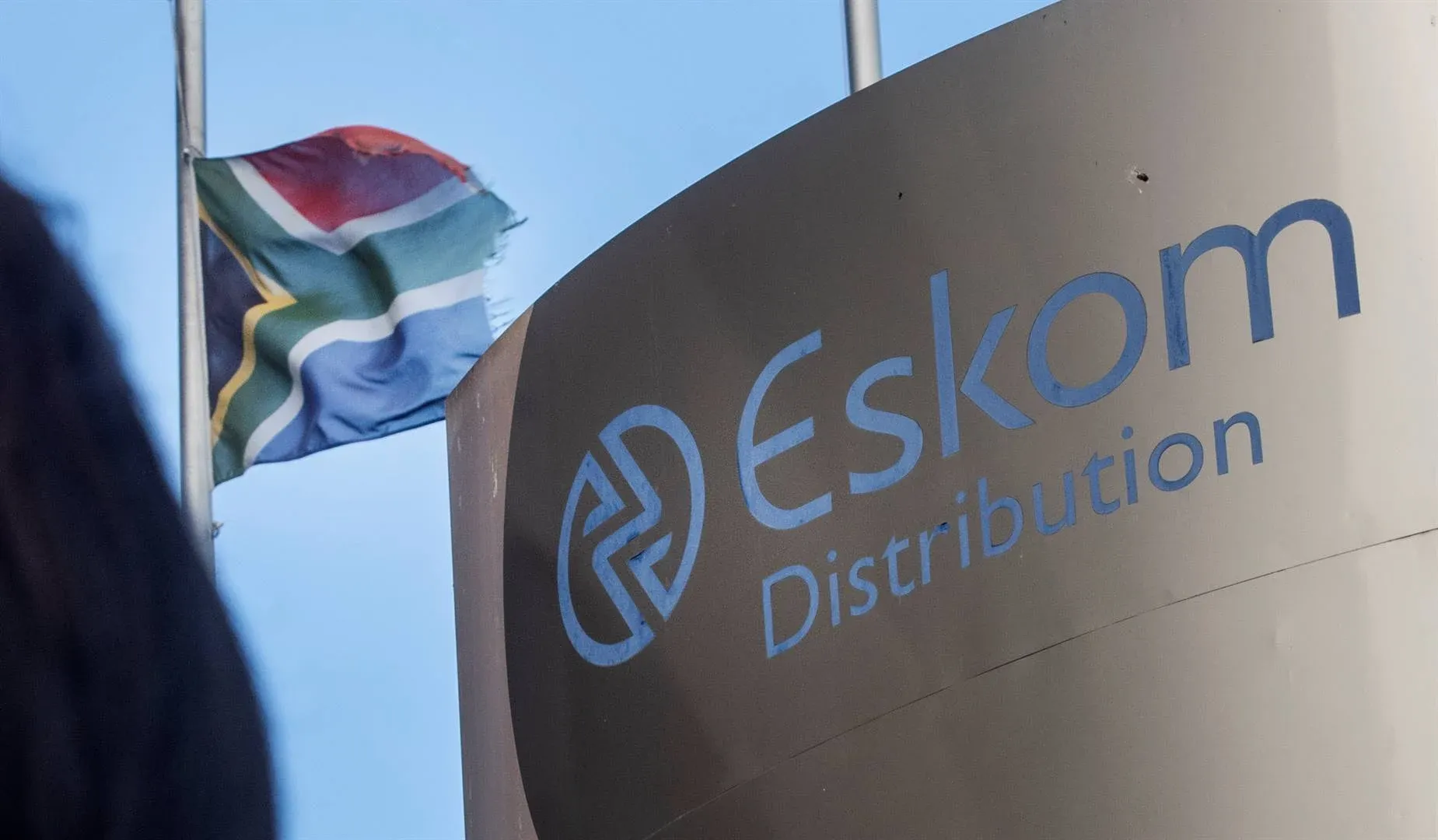Zimbabwe has taken a decisive step toward transforming its economic trajectory with the successful deployment of a revolutionary Tax and Revenue Management System (TaRMS), marking the culmination of a comprehensive digital transformation initiative that could serve as a blueprint for addressing Africa’s massive revenue mobilization challenges. The African Development Bank-funded project, officially launched on August 18, 2025, represents a $10.4 million investment in digital infrastructure that has already delivered remarkable results in its first year of operation.
Build the future you deserve. Get started with our top-tier Online courses: ACCA, HESI A2, ATI TEAS 7, HESI EXIT, NCLEX-RN, NCLEX-PN, and Financial Literacy. Let Serrari Ed guide your path to success. Enroll today.
Historic Revenue Performance Breakthrough
The impact of Zimbabwe’s digital tax revolution has been nothing short of extraordinary. According to the Zimbabwe Revenue Authority (ZIMRA), revenue collected from new taxpayers surged by an unprecedented 238% in 2024—the first full year following the commencement of the new system rollout—compared to 2023. This remarkable achievement demonstrates the transformative power of digital technology in unlocking previously untapped revenue sources.
The system has delivered measurable improvements across multiple key performance indicators that underscore its effectiveness. On-time filing rates improved dramatically from 13.94% in 2023 to 38.07% in 2024, representing a 173% improvement in taxpayer compliance. Return submissions saw even more impressive gains, jumping from 29.41% in 2023 to 62.69% in 2024, while taxpayer registration increased by 115.75% in 2024 with 66,210 new registrants compared to 30,689 in 2023.
Perhaps most significantly, the number of active taxpayers increased from 72,486 under the legacy SAP system to more than 184,000 under TaRMS—a 153% increase that demonstrates the system’s ability to bring previously informal economic actors into the formal tax system. The platform has now issued more than 1.2 million Taxpayer Identification Numbers (TINs), with ZIMRA aiming for every economically active Zimbabwean to have one by 2028.
Digital Infrastructure Investment Strategy
The TaRMS initiative represents a carefully structured partnership between Zimbabwe and the African Development Bank designed to maximize both financial efficiency and development impact. Under the $10.4 million Tax and Accountability Enhancement Project, the African Development Bank provided a $7 million grant specifically for the design and development of the online system, while the Zimbabwean government funded hardware procurement and infrastructure development.
The project’s comprehensive scope extended far beyond simple technology deployment. It included extensive training for both internal ZIMRA staff and external stakeholders, comprehensive change management activities to ensure smooth transition processes, and ongoing technical support to maintain system effectiveness. This holistic approach addresses one of the key challenges facing digital transformation initiatives in developing economies—the need for sustained institutional capacity building alongside technological deployment.
Deputy Finance Minister Kudakwashe David Mnangagwa described the innovation as “a bold step in the country’s economic reform agenda, aimed at enhancing revenue mobilization, improving taxpayer experience, and building a strong foundation for sustainable growth.” The system represents a fundamental shift from Zimbabwe’s fragmented legacy setup that combined SAP backend systems with Microsoft frontend technologies, an arrangement that had created significant inefficiencies, downtime, and performance bottlenecks.
Addressing the Massive Informal Economy Challenge
The TaRMS deployment comes at a particularly crucial time for Zimbabwe’s revenue mobilization efforts, as the country grapples with one of Africa’s most significant informal economy challenges. Current estimates indicate that 76.1% of Zimbabwe’s economy operates informally, largely escaping taxation despite representing enormous economic value.
The scale of this challenge is staggering. World Bank research has revealed that only 6% of Zimbabwe’s informal sector currently pays taxes, yet this sector represents a gross domestic product valuation of $39.8 billion. The Reserve Bank of Zimbabwe has previously disclosed that the informal sector generates over $14 billion in annual revenue—more than the formal sector—and maintains $2.5 billion in cash circulation outside the formal banking system.
This massive informal economy presents both the greatest challenge and the greatest opportunity for Zimbabwe’s revenue mobilization efforts. Despite the informal sector’s substantial economic contribution, ZIMRA expects to collect only $7 billion in taxes for the current fiscal year—a fraction of the potential revenue that could be generated through effective formalization and compliance strategies.
ZIMRA Commissioner General Regina Chinamasa has outlined an ambitious vision for addressing this challenge through integrated digital systems. “In the next two to three years, Zimbabweans can look forward to a robust integration of ZIMRA systems with broader government platforms,” she explained. “This approach will enable ZIMRA to achieve a single view of all taxpayers, regardless of where or how they conduct business.”
Continental Context: Africa’s Revenue Crisis
Zimbabwe’s digital tax initiative must be understood within the broader context of Africa’s severe revenue mobilization challenges. The continent faces what development economists describe as a crisis of domestic resource mobilization that threatens the achievement of critical development goals and economic transformation objectives.
According to the African Development Bank’s comprehensive analysis, Africa needs to close an annual financing gap of $402.2 billion by 2030 to fast-track structural transformation processes and achieve the Sustainable Development Goals. This massive financing requirement cannot be met through external assistance alone—it demands a fundamental transformation in domestic revenue mobilization capabilities.
The challenge is particularly acute when viewed through regional and global comparisons. Revenue-to-GDP levels in Africa significantly lag those of other regions, with average tax-to-GDP revenues remaining below 15% for more than half of the continent’s countries. The African Development Bank estimates that the median African tax-to-GDP ratio must increase from its current level of approximately 14% to a minimum of 27.2% to close the estimated financing gap.
This requirement represents an enormous leap in tax collection efficiency and coverage that can only be achieved through comprehensive reforms combining improved tax policy design, enhanced administrative capacity, and—crucially—digital transformation of tax administration systems. Zimbabwe’s TaRMS initiative represents exactly the type of systematic approach required to achieve these ambitious targets.
Advanced Digital Features and Capabilities
The TaRMS platform incorporates cutting-edge digital technologies designed to address the specific challenges of tax administration in developing economies. The system features comprehensive automation of previously manual processes, including automatic determination of outstanding liabilities, automatic refund identification and processing, and real-time status updates for tax clearance certificates.
One of the most significant innovations is the system’s integrated approach to taxpayer management. TaRMS eliminates duplicate Business Partner Numbers and tax type registrations through online validation of Company Registration Numbers, ID numbers, and bank account numbers. The system integrates seamlessly with the Registrar of Companies, Civil Registry, and banking systems to ensure data accuracy and prevent fraud.
The platform’s sophisticated payment processing capabilities represent a major advancement over previous systems. TaRMS eliminates overpayments and duplicate payments by taxpayers through return-based payment processing, while enabling single payments to settle multiple tax obligations—making tax compliance both cheaper and more convenient for businesses and individuals.
Future enhancements planned for the system include the integration of artificial intelligence and machine learning capabilities for fraud detection, predictive risk analysis, and intelligent case selection. These advanced features will enable ZIMRA to identify potential compliance issues before they become significant problems while focusing audit and enforcement resources on the highest-risk cases.
One decision can change your entire career. Take that step with our Online courses in ACCA, HESI A2, ATI TEAS 7, HESI EXIT, NCLEX-RN, NCLEX-PN, and Financial Literacy. Join Serrari Ed and start building your brighter future today.
Regional Digital Transformation Initiatives
Zimbabwe’s TaRMS initiative is part of a broader continental movement toward digital transformation of tax administration systems. The country has also been implementing complementary digital initiatives, including the Fiscalisation Data Management System (FDMS) for real-time sales data capture and the rollout of electronic fiscal devices for point-of-sale tax compliance.
Recent developments include Zimbabwe’s embrace of comprehensive VAT reforms that mirror successful implementations in countries like South Africa, Rwanda, and Kenya. These reforms center on electronic fiscal devices and integration with real-time invoice reporting systems, enabling every transaction to be instantly visible to tax authorities and reducing opportunities for manipulation or delay.
The technical approach emphasizes interoperability with third-party service providers, allowing businesses to continue using existing Enterprise Resource Planning systems while ensuring compliance with digital tax requirements. This pragmatic approach recognizes that successful digital transformation must work within existing business infrastructure rather than requiring complete system replacement.
Economic Impact and Development Implications
The broader economic implications of Zimbabwe’s digital tax transformation extend far beyond immediate revenue collection improvements. ZIMRA Board Chairperson Anthony Mandiwanza emphasized this transformative potential, describing TaRMS as “fundamentally a nation-building instrument. It is a bridge connecting taxpayers and the Authority, cementing trust, transparency, and efficiency, while firmly aligning ZIMRA with the aspirations of Vision 2030.”
The system’s impact on business efficiency and economic development cannot be overstated. By reducing paperwork requirements, accelerating processing times, and providing clearer compliance rules, TaRMS lowers the administrative burden on businesses while improving their ability to demonstrate tax compliance for access to credit and international markets. These efficiency gains have multiplier effects throughout the economy as businesses can redirect resources from tax administration to productive activities.
Kelvin Banda, Officer-in-Charge of the African Development Bank’s Zimbabwe country office, framed the initiative within the broader African development context: “With dwindling development assistance and donor funding, as well as increased difficulties in accessing external loans, increased domestic resource mobilization is an essential policy mechanism to assist African countries in addressing their specific development challenges.”
Addressing Systemic Revenue Collection Challenges
The TaRMS implementation addresses several systemic challenges that have historically undermined tax collection effectiveness in developing economies. The previous system suffered from significant technical limitations, including frequent downtime, slow processing speeds, and limited integration capabilities that created bottlenecks and compliance difficulties for taxpayers.
The new system’s comprehensive automation eliminates many opportunities for human error and corruption while providing complete audit trails for all transactions. Automatic reversal of interest charges and penalties on adjusted tax liabilities ensures fairness while reducing administrative burden, while automated reminder systems help taxpayers stay compliant with filing and payment requirements.
The platform’s ability to handle both Zimbabwe dollar and US dollar transactions within a single integrated system reflects the practical realities of operating in a multi-currency environment. This capability simplifies compliance for businesses operating across currency systems while providing tax authorities with comprehensive visibility into all economic transactions.
International Development Finance Context
Zimbabwe’s TaRMS initiative occurs against the backdrop of broader challenges in international development finance that are making domestic resource mobilization increasingly critical for African countries. As UN Deputy Secretary-General Amina Mohammed noted, the world faces an estimated $4 trillion annual sustainable development financing gap, making robust domestic fiscal systems essential for achieving development goals.
The United Nations emphasizes that domestic public finance is crucial for financing the Sustainable Development Goals, increasing equity, and strengthening macroeconomic stability. Robust fiscal systems, including both tax collection and expenditure management, drive economic growth, industrial transformation, and environmental sustainability while contributing to poverty alleviation and inequality reduction.
World Bank analysis indicates that mobilizing tax revenue is key for developing countries to finance investments in human capital, health, and infrastructure necessary to end extreme poverty and boost shared prosperity. To achieve the Sustainable Development Goals, low-income countries face an estimated annual financing gap of half a trillion dollars, with the International Monetary Fund estimating that additional tax revenues could finance one-third of this gap.
Technology Integration and Future Scalability
The TaRMS platform has been designed with scalability and future technology integration as core priorities. The system architecture supports integration with emerging technologies including blockchain for secure transaction recording, artificial intelligence for pattern recognition and fraud detection, and mobile payment systems to accommodate the growing digital economy.
The platform’s API-driven design enables seamless integration with other government systems, including trade facilitation platforms, business registration systems, and financial sector databases. This integrated approach creates opportunities for comprehensive economic monitoring and policy coordination that can enhance overall government effectiveness.
Future development plans include expansion of the system’s analytical capabilities to support evidence-based policy making and strategic planning. Real-time data collection and analysis capabilities will enable tax authorities to identify emerging trends, assess policy impacts, and optimize resource allocation for maximum revenue collection efficiency.
Lessons for Continental Tax Reform
Zimbabwe’s TaRMS experience offers valuable lessons for other African countries seeking to modernize their tax administration systems. The phased implementation approach, beginning with core functionality and gradually expanding capabilities, has proven effective in managing complex system transitions while maintaining operational continuity.
The emphasis on comprehensive stakeholder engagement and change management has been crucial for achieving high levels of user adoption and compliance. Training programs for both tax authority staff and external users have ensured that the system’s advanced capabilities are fully utilized while minimizing transition difficulties.
The project’s partnership structure, combining African Development Bank technical expertise and financing with government ownership and commitment, demonstrates an effective model for international development cooperation that builds local capacity while achieving immediate operational improvements.
Long-term Strategic Vision
Looking beyond immediate revenue collection improvements, Zimbabwe’s digital tax transformation represents a fundamental shift toward evidence-based governance and transparent public financial management. The system’s comprehensive data collection and analysis capabilities will enable more sophisticated economic policy making and improved public service delivery.
The integration of tax administration with broader government systems creates opportunities for coordinated approaches to economic development, regulatory compliance, and citizen services. Real-time visibility into economic activity enables more responsive policy adjustments and targeted interventions to support business growth and economic development.
As Commissioner General Chinamasa emphasized, the ultimate goal extends beyond revenue collection to rebuilding trust between citizens and government institutions. “Tax is not just a legal obligation, but a national contribution,” she explained. “We are improving service delivery, strengthening complaint resolution channels, and holding ourselves to the highest standards of integrity.”
The success of Zimbabwe’s digital tax transformation initiative demonstrates that African countries can achieve dramatic improvements in revenue mobilization through strategic investments in digital infrastructure, comprehensive institutional reform, and innovative international partnerships. As the continent grapples with the enormous financing requirements for achieving development goals, initiatives like TaRMS point toward practical solutions that can unlock domestic resources while building more effective and responsive governance institutions.
Ready to take your career to the next level? Join our Online courses: ACCA, HESI A2, ATI TEAS 7 , HESI EXIT , NCLEX – RN and NCLEX – PN, Financial Literacy!🌟 Dive into a world of opportunities and empower yourself for success. Explore more at Serrari Ed and start your exciting journey today! ✨
Track GDP, Inflation and Central Bank rates for top African markets with Serrari’s comparator tool.
See today’s Treasury bonds and Money market funds movement across financial service providers in Kenya, using Serrari’s comparator tools.
Photo source: Google
By: Montel Kamau
Serrari Financial Analyst
26th September, 2025
Article, Financial and News Disclaimer
The Value of a Financial Advisor
While this article offers valuable insights, it is essential to recognize that personal finance can be highly complex and unique to each individual. A financial advisor provides professional expertise and personalized guidance to help you make well-informed decisions tailored to your specific circumstances and goals.
Beyond offering knowledge, a financial advisor serves as a trusted partner to help you stay disciplined, avoid common pitfalls, and remain focused on your long-term objectives. Their perspective and experience can complement your own efforts, enhancing your financial well-being and ensuring a more confident approach to managing your finances.
Disclaimer: This article is for informational purposes only and does not constitute financial advice. Readers are encouraged to consult a licensed financial advisor to obtain guidance specific to their financial situation.
Article and News Disclaimer
The information provided on www.serrarigroup.com is for general informational purposes only. While we strive to keep the information up to date and accurate, we make no representations or warranties of any kind, express or implied, about the completeness, accuracy, reliability, suitability, or availability with respect to the website or the information, products, services, or related graphics contained on the website for any purpose. Any reliance you place on such information is therefore strictly at your own risk.
www.serrarigroup.com is not responsible for any errors or omissions, or for the results obtained from the use of this information. All information on the website is provided on an as-is basis, with no guarantee of completeness, accuracy, timeliness, or of the results obtained from the use of this information, and without warranty of any kind, express or implied, including but not limited to warranties of performance, merchantability, and fitness for a particular purpose.
In no event will www.serrarigroup.com be liable to you or anyone else for any decision made or action taken in reliance on the information provided on the website or for any consequential, special, or similar damages, even if advised of the possibility of such damages.
The articles, news, and information presented on www.serrarigroup.com reflect the opinions of the respective authors and contributors and do not necessarily represent the views of the website or its management. Any views or opinions expressed are solely those of the individual authors and do not represent the website's views or opinions as a whole.
The content on www.serrarigroup.com may include links to external websites, which are provided for convenience and informational purposes only. We have no control over the nature, content, and availability of those sites. The inclusion of any links does not necessarily imply a recommendation or endorsement of the views expressed within them.
Every effort is made to keep the website up and running smoothly. However, www.serrarigroup.com takes no responsibility for, and will not be liable for, the website being temporarily unavailable due to technical issues beyond our control.
Please note that laws, regulations, and information can change rapidly, and we advise you to conduct further research and seek professional advice when necessary.
By using www.serrarigroup.com, you agree to this disclaimer and its terms. If you do not agree with this disclaimer, please do not use the website.
www.serrarigroup.com, reserves the right to update, modify, or remove any part of this disclaimer without prior notice. It is your responsibility to review this disclaimer periodically for changes.
Serrari Group 2025












